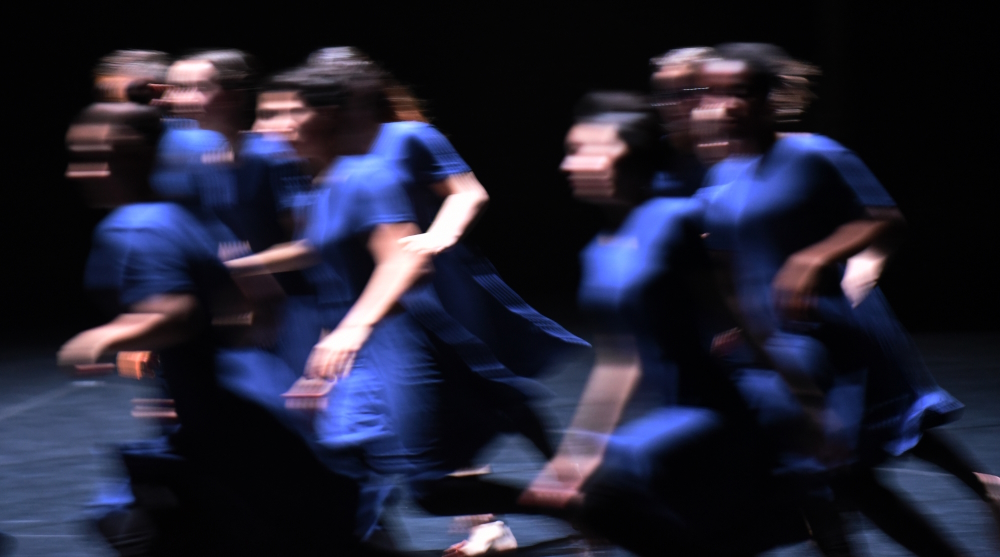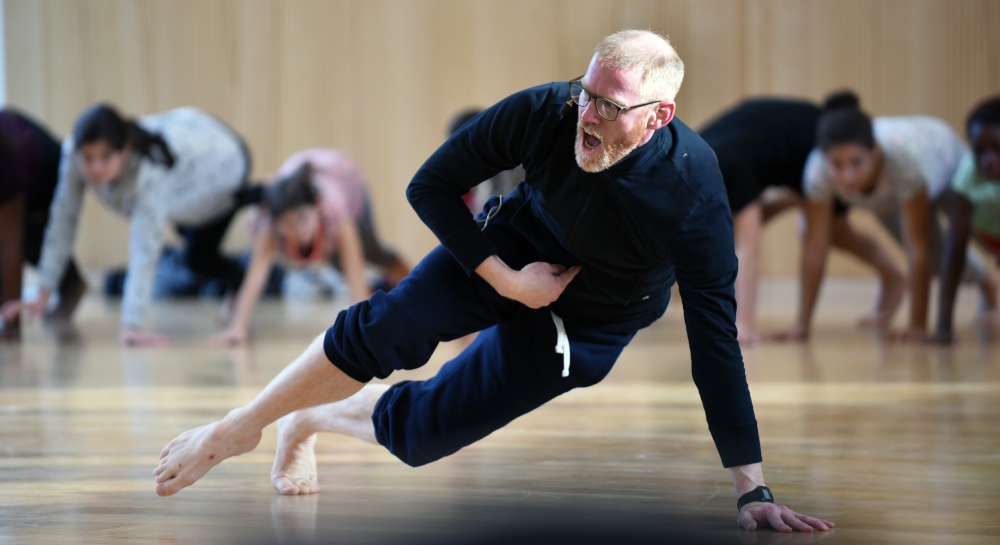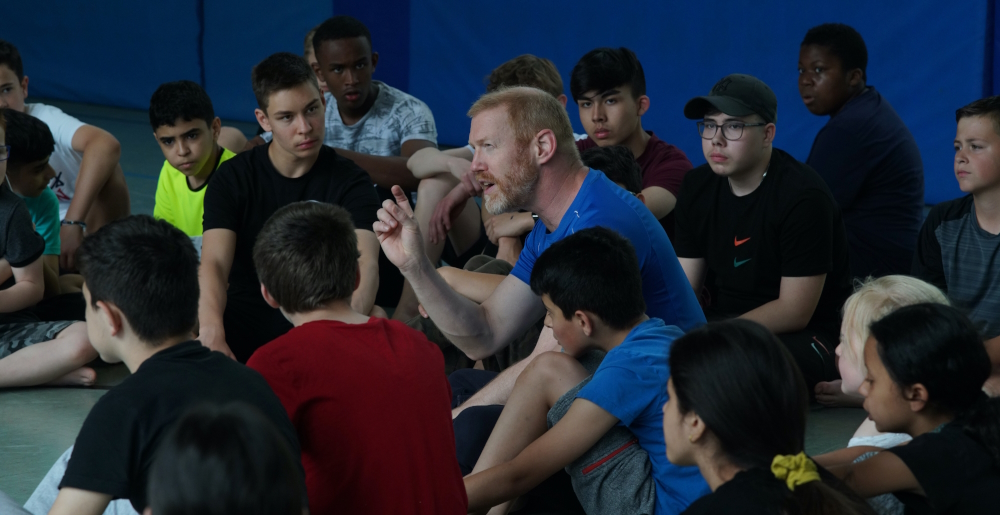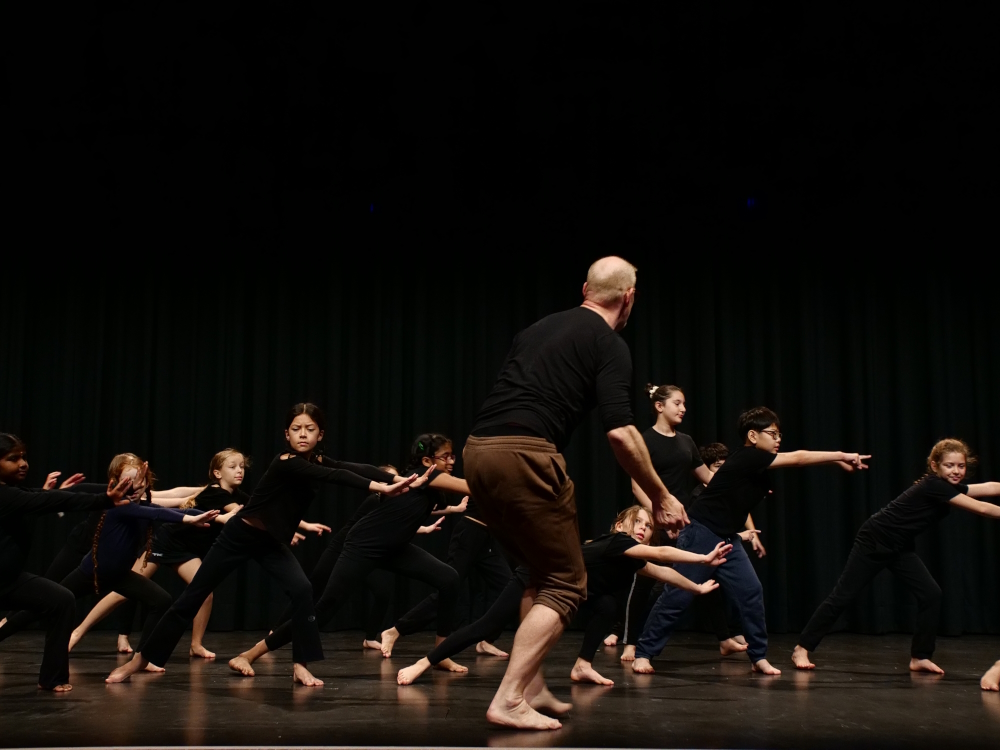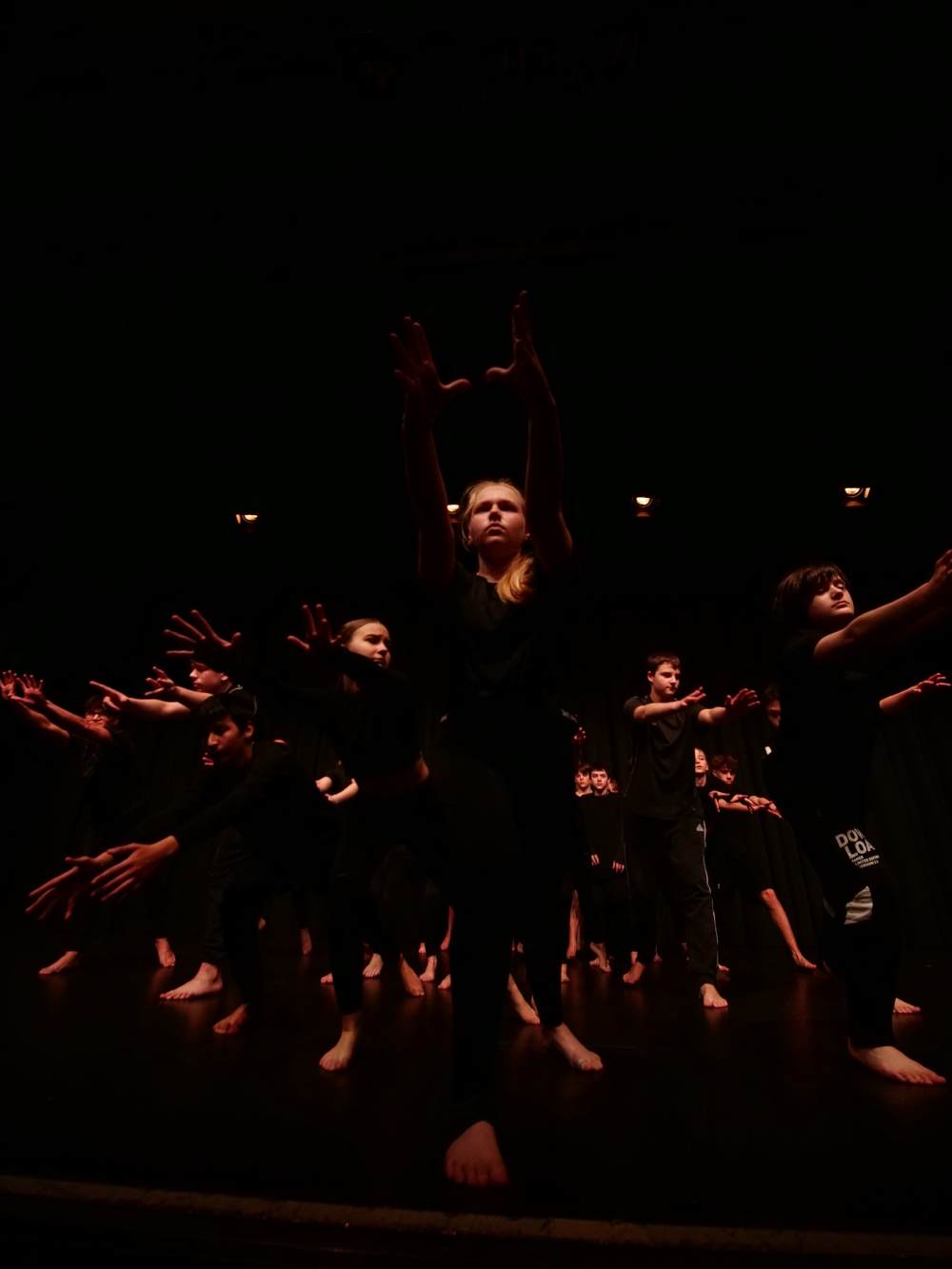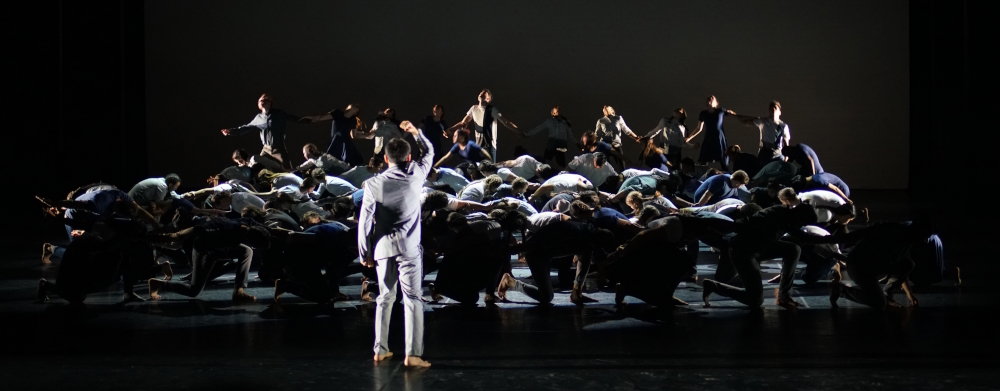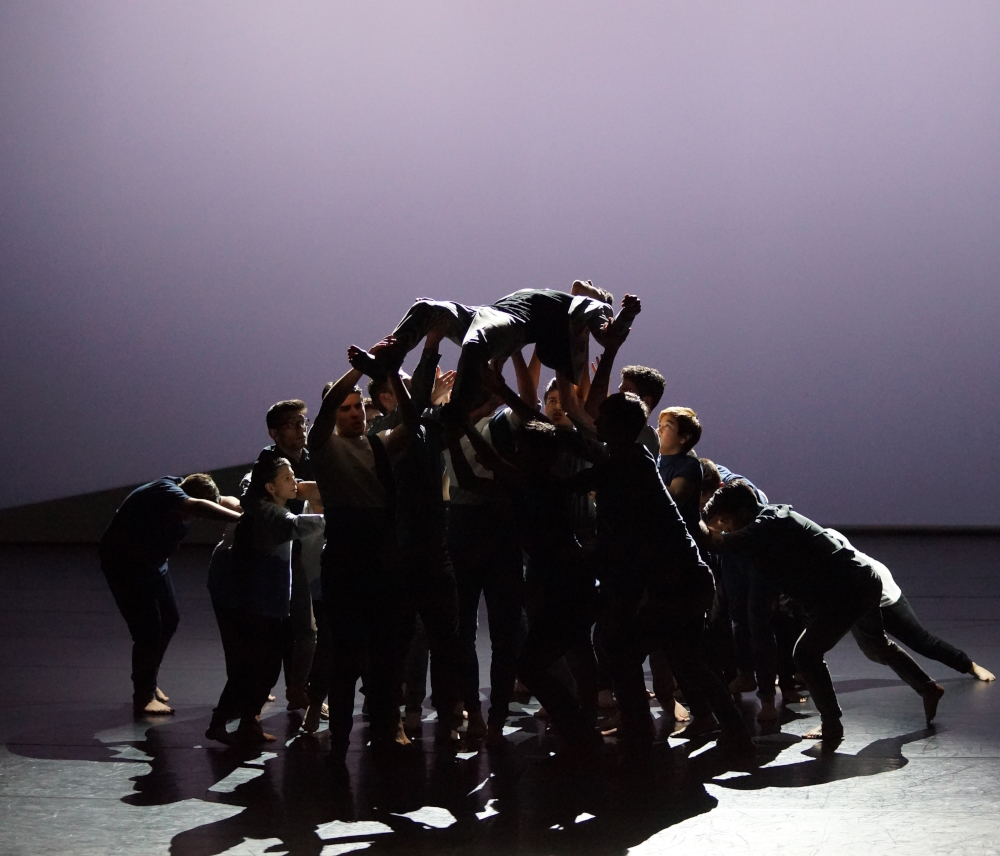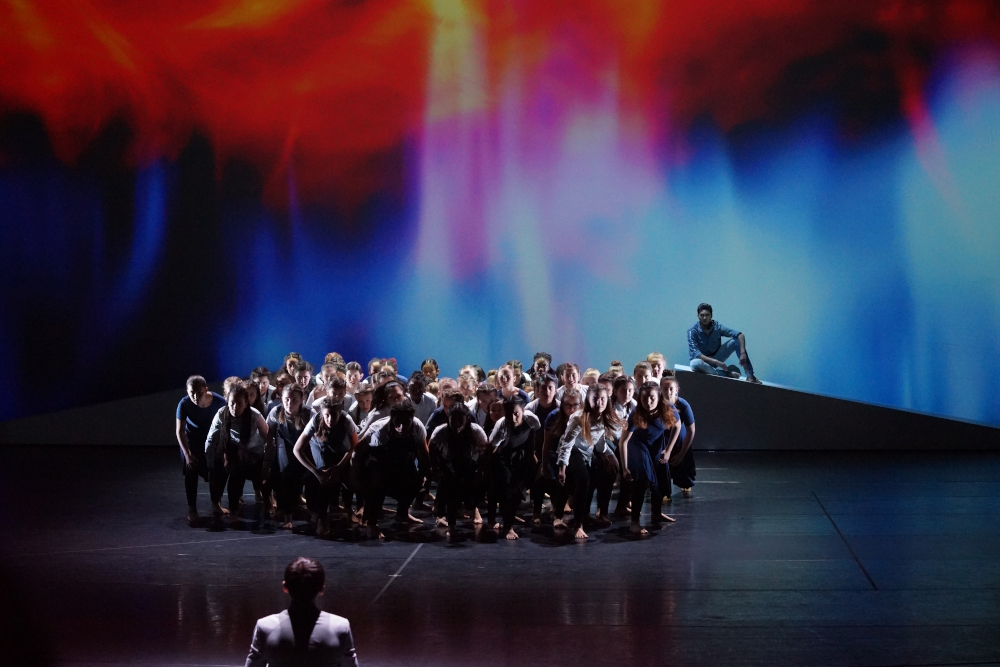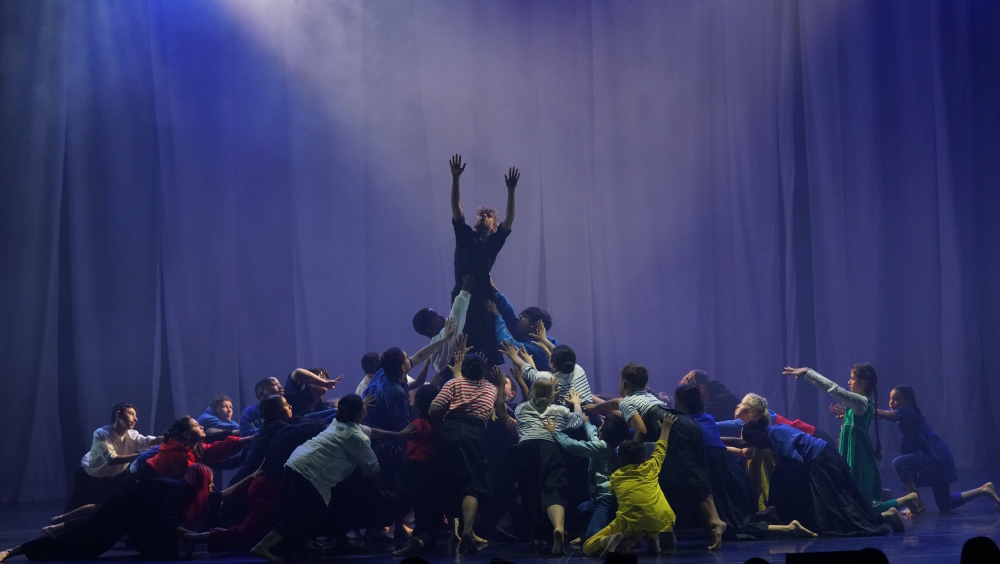Alan Brooks
choreographer / dancer / Community & Youth Dance Advisor / dance pedagogue
UK / Germany
He initiated the first School Dance Program of a State ballet company in Germany (his status as a fully employed dancer for the Ministry of Education in Bavaria was unique at the time). It’s targeted primarily at Comprehensive and Special Needs School students to “discover a new form of communication for themselves that overcomes linguistic and social differences and promotes individual and unprejudiced self development. The main focus of his work is not only to pass on the knowledge and physicality of contemporary dance, but also to encourage the participants to open up to new and creative forms of expression“ (from artist’s website).
Alan Brooks
choreographer / dancer / Community & Youth Dance Advisor / dance pedagogue
UK / Germany
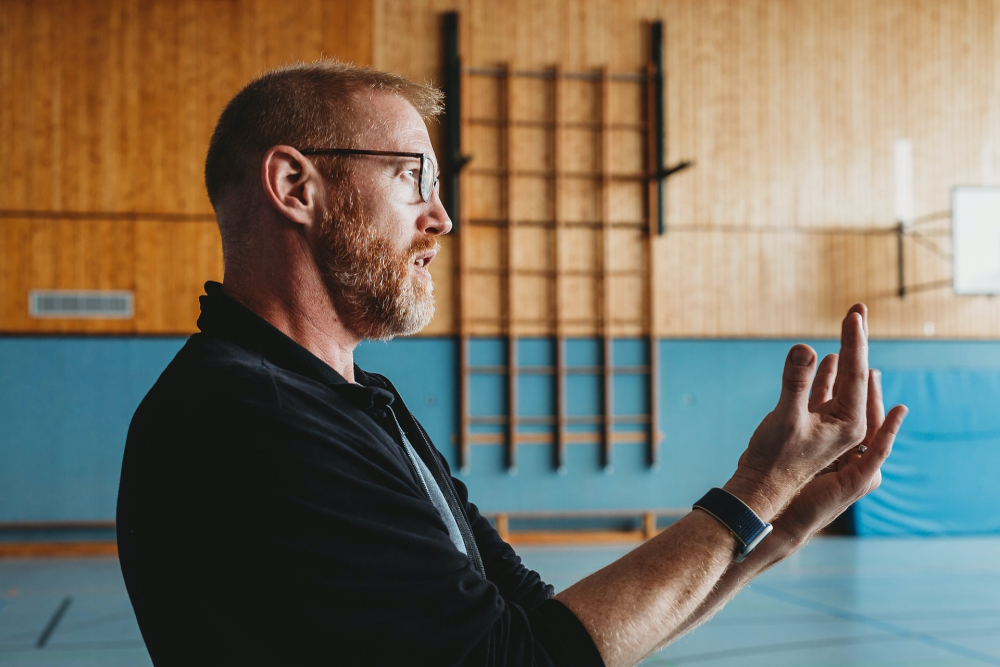
The Englishman also teaches "community dance projects" in socially difficult neighbourhoods. Apart from that this artist who realised a new choreography of Johann Strauss‘ operetta The Fledermaus for the State Theatre in Munich, is in high demand in various professional areas: as a lecturer at universities, Choreographer for Film and TV, Youth Dance Consultancy for the National Dance Company of Wales and as a seminar leader for Body Language, developing skills for a better understanding of how the body as an instrument can be clearer and more authentic in all forms of non verbal communication. Furthermore he’s project leader for History In Motion using dance and movement to enable young people to understand and build bridges to the history of the Flossenbuerg Concentration Camp. Worth mentioning also that this creative himself has a dramatic story of how he got into dancing.
„School was hell for me as a child and teenager because I was bullied a lot, really badly.“, Alan Brooks told provokativ.com. But when the kid (* 25 March 1977 in Chertsey, south of London) did his A-Levels at the age of 16 he chose dance as an additional course. „It felt like coming home: It was like someone was handing me the key to my real home.“ That knowledge was confirmed while studying at London‘s Rambert School of Ballet and Contemporary Dance from September 1993 until June 1996. „I was looking for a place in this world where I really belonged. Rambert gave me that place. Until then, I felt like a complicated puzzle piece that didn't fit into any picture. Until I came to Rambert: suddenly, click, I found my place. What a precious gift! In Rambert, I learnt what dance can and should be. It's not about jumping to the music and looking beautiful. The meaning of dance goes far, far beyond mere performance, it reaches deep into life.“
Before Alan Brooks began imparting such knowledge to teenagers, he gained experience on a wide scale. This included professional engagements at the Scottish Dance Theatre in Dundee (including his initial training as a Community Dance Worker/dance pedagogue), 9 years as a soloist at the State Ballett at Munich’s Gaertnerplatz Theatre in 1998 and starting ‚School Dance in Bavaria‘ in schools on behalf of the Bavarian State Education Ministry. Later on he joined the company of award winning Contemporary Dance choreographer Carolyn Carlson in France for 6 years. At the same time Munich International School commissioned him to choreograph a dance piece on the Annual Arts Day that played across the entire school grounds and got over 1200 teachers and pupils dancing.
Simultaneously running the school programme for the Education Ministry and touring internationally meant that something had to give and he decided to stick with education.
The essential message that the self-proclaimed „strict teacher nowadays“ wants the kids to internalise is that they are worth something and that they can be ambitious. „Ambition is not only needed in competitions“, Alan Brooks is quoted on provokativ.com. „We need ambition when we listen, when we are courageous or when we support each other. We need ambition if we want to improve as people. I hate it when people don't even try. If they struggle and lose, that's okay. But they have to try! Maybe I can put it this way: To try is gold. And even if silver comes out of it - it’s great!“ Such an attitude he tries to convey in ADAMAS, his series of inclusive dance projects for the City of Duesseldorf, Germany.
In the perviously mentioned interview Alan Brooks remembered the best advice that sticks to his mind up until today. Carolyn Carlson once said to him: "All you have to do is change the universe." For him that correction made compete sense and so he has interpreted it for himself in these five short sentences: “Just change the universe. Don't erase it. Don't restart it. Change it. That's what I try to do, every day.“
Alan Brooks is based in Munich, Germany, and Las Palmas, Spain.
Interview November 2023
The meaning of dance into life: ambition is key!
INTUITION/IMAGINATION
Intuition never feels like intuition, it feels like an adrenaline rush and then a moment of profound relief as if one has just missed a bullet. I often dreamed of being the artist who comes in in the morning with all the piece of the puzzle complete because it all came to me in a dream…. I’m still waiting….!
I often call my brain “The Oven”. I feel like through lots of talking, thinking, wandering round, listening to music and just generally existing in an interactive social world, lots of ingredients get thrown into the back of my brain and when I need to start I reach in and more often than not something has been baking away without me realising it. Because I work with so many different and very diverse groups of people, who have often never danced before, there are a series of moments that occur that are all linked. The moments when the piece is commissioned of just fantasising (the “we could have elephants and a cast of thousands!” moment) the realisation that we’re starting in 2 days (the “we can’t afford elephants and I don’t know how elephants work” moment) and the first day of rehearsal (cut the elephants we never needed elephants, these guys are going to be stunning enough moment).
I always need a starting place, a seed from which to grow and my assistants are constantly helping me by reminding me to do something/anything because we can always work on it later or throw it away and start again. That seed can be tiny, a duet image, the wish to go batshit crazy, a need for fragility somewhere in a section. It doesn’t matter, I just have to start. Then somewhere in the process, the oven door opens and I realise that there was a plan all along, I was just the last person my own brain chose to tell.
One of the beautiful things about dance is its practicality. There is a limit enforced onto endless theory and discussion simply by the fact that the lift either works or it doesn’t. Maybe it’s worth fighting for, maybe with a different grip or shift in weight it could work but ultimately all discussion falls away and it becomes a practical, physical question of “can we make this work or not”? Is the piece survivable or not? Will we injure ourselves? If we’re going to be sweating this much, does it at least look good/get the emotion across? That seam of practical questions roots all artistic decisions, all our searching for inspiration and imagination, and makes dance at its heart a very grounded and deeply practical art form
INSPIRATION
People, and music are the primary sources of my inspiration. I usually use music I can slightly obsess over and can’t stop listening to on repeat which although it can drive me crazy, means there’s time for the music to tell me what it needs. The music makes it clear that there has to be a bit of sturm und drang or a solo only half visible in the light or something big and bold and glorious or that the music although gorgeous, has to be worked against so there’s maximum contrast.
All my plans transform though when I meet my groups in the studio and it suddenly becomes clear that I’ve been wrong the whole time and they need something completely different. Because many of my groups are young people, often in challenging social situations, there’s also a constant pull between what they want and what they need. The trick is to find the sweet spot between both that surprises everyone.
Film offers so many glorious images and feelings. I never take directly from a film but sometimes I watch a movie and the swell of emotion that hits during the final chase or the tender love story will give me a colour and texture that I was looking for. I would never tell my dancers but sometimes I know I want the audience to feel what I felt in that moment in a film. How I get there however is my problem. And all ideas are old ideas! Everything has been done somewhere by someone.
Currently, contemporary dance has a constant need to reinvent itself and develop a new dance language, it drives me crazy! As far as I know, writers don’t develop a new language to write their books in, they find fluency and poetry in the language their readers speak. I’d much rather choreograph in a language everyone on the planet can speak than worry about being “new” all the time….! And luckily I always find that there is still so much new to say in the language of dance.
CREATIVITY
Work means the studio, a rehearsal place or a Gymnasium. That’s where all the theory and worry and prep falls away and there’s just me, the music and my dancers. Whether I’m ready or not, am inspired or not, it doesn’t matter. The dancers look at me and I have to start the journey. It’s always a terrifying moment but utterly exhilarating regardless of whether I’m trying something completely new or returning to an old friend hoping it will bring something out of the group.
I’m often alone but if I can and there is the funding in place, I love to have my team with me. They’re fantastic professionals in their own right and I’d be a fool to have them and not access their experience and perspective. They allow me (amongst so many other things) to admit to being scared or unsure and help me find my way back into the essence of the work. They also know exactly when and how to push me or to slow me down.
My work is always collaborative and I believe that’s a strength. Sometimes time runs out, sometimes, injury limits ones options or the funding group want to impress a certain clientele with a production but I think that’s fair. As a choreographer, my work has to create bridges between the themes of the piece and the audience, between the dancer and my choreography and I think it’s fair enough for the people funding the project to be happy with the result.
I often have Walt Whitmans famous quote about being “full of multiples” in my head and I think it’s true that to access different parts of oneself in order to serve a moment or a piece shouldn’t be a terrible thing, rather an act of openness to see if we can reach more people. Of course there are things I won‘t compromise on but they are more to do with process and how my dancers are treated rather than making the second section lighting a little brighter so the photographers don’t want to kill me. I think it’s much harder to find the places of compromise at the beginning of ones career when everything is so unsure and scary anyway and everything has to be tested and discovered for the first time. I’m lucky enough that generally the people are more willing to give me what I need than 20 years ago when I was just starting out.
I have no idea why my creations are how they are except they’re the sum parts of me in addition to everybody I’ve worked with. I am very very aware of that which has come before and that we all stand on the shoulders of giants who have raised us up. All those processes and choreographies im my head have never gone away anymore than all the books I’ve read have been forgotten, it’s all in my head somewhere knotted up, working away, getting dusty but there. Present and part of the mix that is me. Each time I make a piece I know the amazing works I was privileged to dance are in the piece somewhere because they’re in my DNA by now. If there is one thing that is very “Alan Brooks” however, I know that my dancers understand and believe in the work and themselves deeply and that applies to the professionals but also to the glorious, chaotic, special needs or teenagers from socially difficult backgrounds I work with. To go onstage in my work, means you burn for the moment and are ready to fight to make sure the light never goes out!
SUCCESS
Success is deeply subjective. I know choreographers who have made a lot of money and have very nice lives who are completely empty and so is their work. Are they successful? Just like there’s not a lot of “woohoo I’ve made it” connected to working in a coffee shop at 42 years old, unable to pay the rent but making really good solo work that no one will ever see. There’s also the dancers disease of concentrating on the negative. Artists can be very needy. The most exquisit dancer in the world, wants and expects to be told every day, multiple times what he has done wrong/what can be done better/what still isn’t working perfectly. Every dancer has it and it is in me too. This can lead to an incredibly open and exciting work ethic of always pushing on and up with no end to the adventure. It can also lead to crippling self doubt and self destructiveness and an inability to recognise achievements.
On a good day, I can do both, I can recognise where I was lazy or complacent and hid it behind necessity or tiredness. And I can be proud of myself and my dancers for achieving what they did and bask in a little adoration. I would be lying if I never repeated myself in my work but I lean into Alfred Hitchcock’s perspective: “To steal from oneself is style”. Of course, not every day is a good day…
So much is connected with WHY one is doing the work. If it’s to make millions and get famous (good luck in dance) then it’s clear what success is, if you’re doing the work because it’s who you are, then it is harder to define. On a practical level, I’m delighted that everyone who told me to get a trade to fall back on if the dancing doesn’t work out was proven wrong and I somehow and miraculously have been able to support my whole life through my art. There is also a lack of screaming fans following me round Aldi as I buy milk which I can live with very happily. Of course I remain very ambitious, I have huge plans ready to go as soon as I have the chance but a lot of my success is in the young people I work with. No-one will ever know how hard it was for some of them to get on stage, or create a solo or work in a team or stand up straight, but they did it and as soppy as it sounds, if they achieved something that led to them understanding what they might be capable of as people and I was allowed to play a small part of that, then I succeeded.
MY FAVORITE WORK:
If you’re looking for a representative work, go to Interconnected from 2018. It was my first full length work and I wasn’t sure I could make it. I was amazed to find that it poured out of me and watching my incredible groups of young people grow into dancers before my eyes will never not be a privilege for me. It reminded me that dance gives voices to the voiceless and sometimes that includes me.
